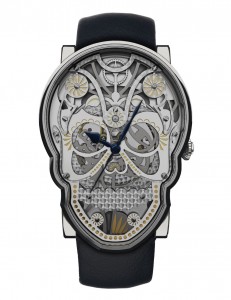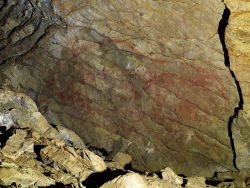Check your watch. Is it skull time?
This is an absolute thing of beauty. More so, it’s functional! All of us at the Museum of Mysteries are obsessed with this watch. So, check it out, and join the club…
“The themes of time and mortality are closely linked. Early 17th-century memento mori clocks were tucked inside little golden skulls to remind the owner of their own mortality, and Fiona Krüger brings this idea up to date…”
Fiona Kruger is shaking things up in the traditional world of watchmaking with her Skull watch
by Maria Doulton
“It’s not often that a watch is truly different. By their very nature and function, they are constrained by mechanical and technical constraints. Decoration is normally limited to the materials used and embellishment of the dial and case and, bar a few seriously expensive watches – think MB&F or Harry Winston’s Opus series – most tend to look like, well, watches.
Then I received, out of the blue, an email from one Fiona Krüger telling me about her watch. Already I was curious. For starters she is a woman, an unusual thing in the world of watchmaking. What’s more, she is Scottish, making her a very rare creature indeed in the world of Swiss watchmaking.
Fiona Krüger is not a watchmaker herself but a designer who has decided that it is high time watches were a little more exciting. Fiona studied Fine Art and Product Design and went on to do a Masters of Advanced Studies in Design for the Luxury Industry at ECAL in Switzerland. Based in Switzerland, it was then that she decided to try and tackle a watch. And as a woman, I can understand why someone young, with a design background, might want to shake things up in this traditional industry.
The result is the extraordinary-looking Skull watch, of which only 12 will be produced. Some have been pre-sold for around £9,000 (excluding taxes and shipping), and their owners can follow the progress of the making of their watch with updates on Facebook….”
For the rest, and more pictures, click here.
Share


